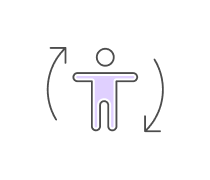What is the term used for the metabolic pathway in which glucose...
Organisms that can exist with light as an energy source and an...
Which of the following is true of enzymes?
Which of the following statements correctly describe(s) catabolic...
What is the term for metabolic pathways that release stored energy by...
When hydrogen ions are pumped from the mitochondrial matrix across the...
All of the events listed below occur in the light reactions of...
How many carbon atoms are fed into the citric acid cycle as a result...
You have a friend who lost 7 kg (about 15 pounds) of fat on a "low...
A plant has a unique photosynthetic pigment. The leaves of this plant...
During aerobic cellular respiration, a proton gradient in mitochondria...
Each time a molecule of glucose (C6H12O6) is completely oxidized via...
Which of the following statements describes the results of this...
During glycolysis, when glucose is catabolized to pyruvate, most of...
ATP generally energizes a cellular process by
How can one increase the rate of a chemical reaction?
Where does the Calvin cycle take place?
...
Reactants capable of interacting to form products in a chemical...
An enzyme catalyzes a reaction by
The mechanism in which the end product of a metabolic pathway inhibits...
Which of the following normally occurs whether or not oxygen (O2) is...
Which of the following statements is (are) correct about an...
In order for NAD+ to remove electrons from glucose or other organic...
Where is the electron transport chain found in plant cells?
When a glucose molecule loses a hydrogen atom (not a hydrogen ion) as...
Why is ATP an important molecule in metabolism?
The hydrolysis of ATP to ADP and inorganic phosphate (ATP +...
Which of the following statements regarding ATP is (are) correct?
During a laboratory experiment, you discover that an enzyme-catalyzed...
The primary function of the mitochondrion is the production of ATP. To...
Which of the following occurs in the cytosol of the cell?
What is the primary function of the light reactions of photosynthesis?
Some photosynthetic organisms contain chloroplasts that lack...
A molecule that is phosphorylated
Which metabolic pathway is common to both cellular respiration and...
What are the products of the light reactions that are subsequently...
In mitochondria, chemiosmosis translocates protons from the matrix...
Which term most precisely describes the cellular process of breaking...
Where does glycolysis takes place?
Which of the following statements is true concerning catabolic...
What is a nonprotein "helper" of an enzyme molecule called?
How many reduced dinucleotides would be produced with four turns of...
Starting with citrate, how many of the following would be produced...
Where do the catabolic products of fatty acid breakdown enter into the...
Which of the following describe(s) some aspect of metabolism?
According to the induced fit hypothesis of enzyme catalysis, which of...
During oxidative phosphorylation, H2O is formed. Where does the oxygen...
Which of the following produces the most ATP when glucose (C6H12O6) is...
...
What term is used to describe the transfer of free energy from...
Which of the following statements is (are) true about enzyme-catalyzed...
The active site of an enzyme is the region that
As temperature decreases, the rate of an enzyme-catalyzed reaction...
The molecule that functions as the reducing agent (electron donor) in...
Which metabolic process is most closely associated with intracellular...
How many molecules of carbon dioxide (CO2) would be released from the...
Which of the following statements about the light reactions of...
Which of the following statements about NAD+ is false?
When 10,000 molecules of ATP are hydrolyzed to ADP and Pi in a...
Sucrose is a disaccharide, composed of the monosaccharides glucose and...
Many different things can alter enzyme activity. Which of the...
Carbon dioxide (CO2) is released during which of the following stages...
Which of the following describes the sequence of electron carriers in...
Assume a thylakoid is somehow punctured so that the interior of the...
The ATP made during fermentation is generated by which of the...
Phosphofructokinase is an important control enzyme in the regulation...
Inside an active mitochondrion, most electrons follow which pathway?
Which of the following is not true concerning the cellular...
What does the chemiosmotic process in chloroplasts involve?
A solution of starch at room temperature does not readily decompose to...
If photosynthesizing green algae are provided with CO2 synthesized...
A major function of the mitochondrial inner membrane is the conversion...
When glucose (C6H12O6) is oxidized to CO2 and water in cellular...
Carbon skeletons for amino acid biosynthesis are supplied by...
Starting with one molecule of citrate and ending with oxaloacetate,...
In a plant cell, where are the ATP synthase complexes located?
Which of the following is (are) true for anabolic pathways?
During cellular respiration, acetyl CoA accumulates in which location?
Starting with one molecule of isocitrate and ending with fumarate,...
The function of both alcohol fermentation and lactic acid fermentation...
Why does the oxidation of organic compounds by molecular oxygen to...
Where are the proteins of the electron transport chain located?
An organism is discovered that consumes a considerable amount of...
What wavelength of light is most effective in driving photosynthesis?
Energy released by the electron transport chain is used to pump H+...
All of the following are directly associated with photosystem II...
The early suggestion that the oxygen (O2) liberated from plants during...
Assume a mitochondrion contains 58 NADH and 19 FADH2. If each of the...
Which type of organism obtains energy by metabolizing molecules...
















